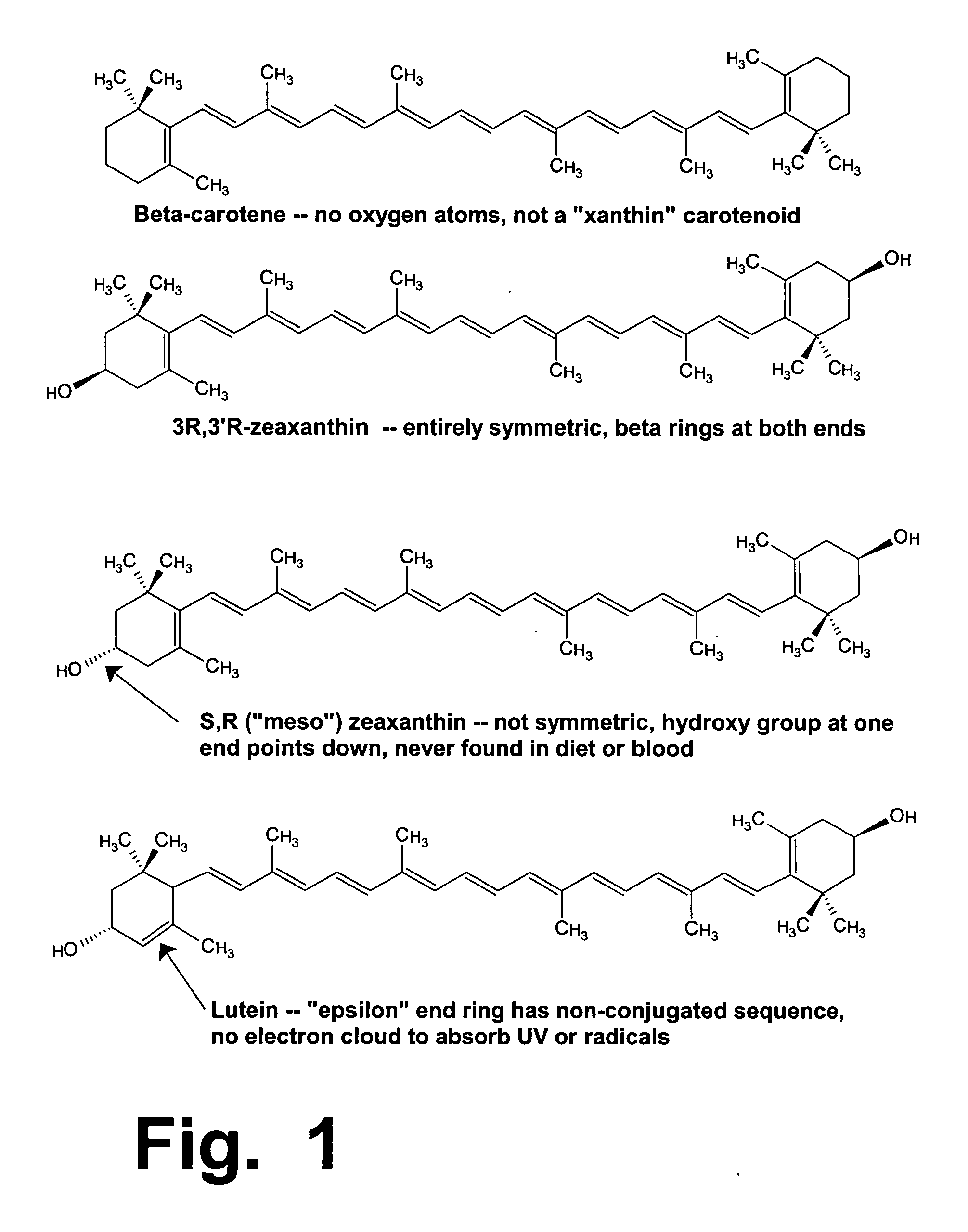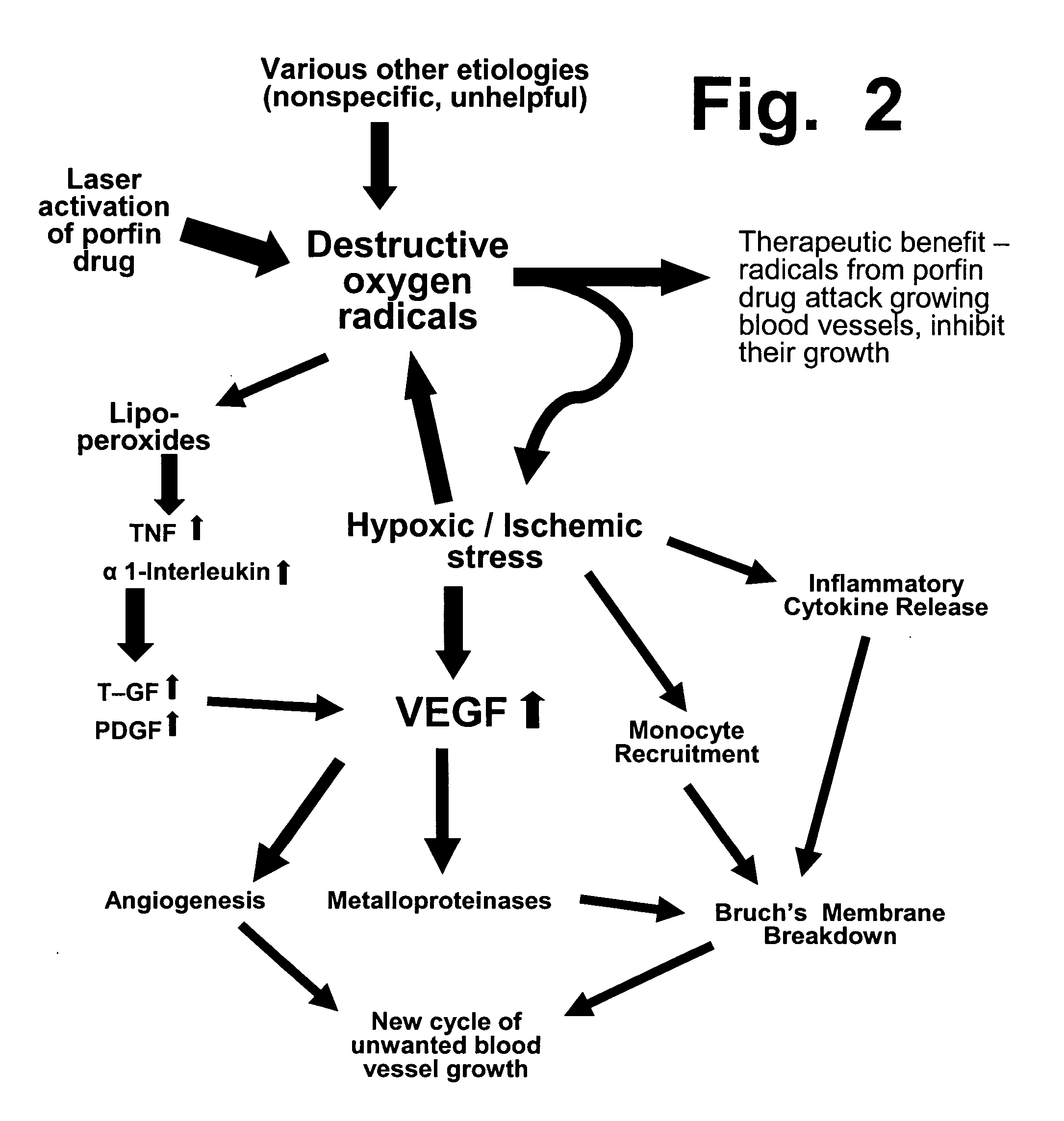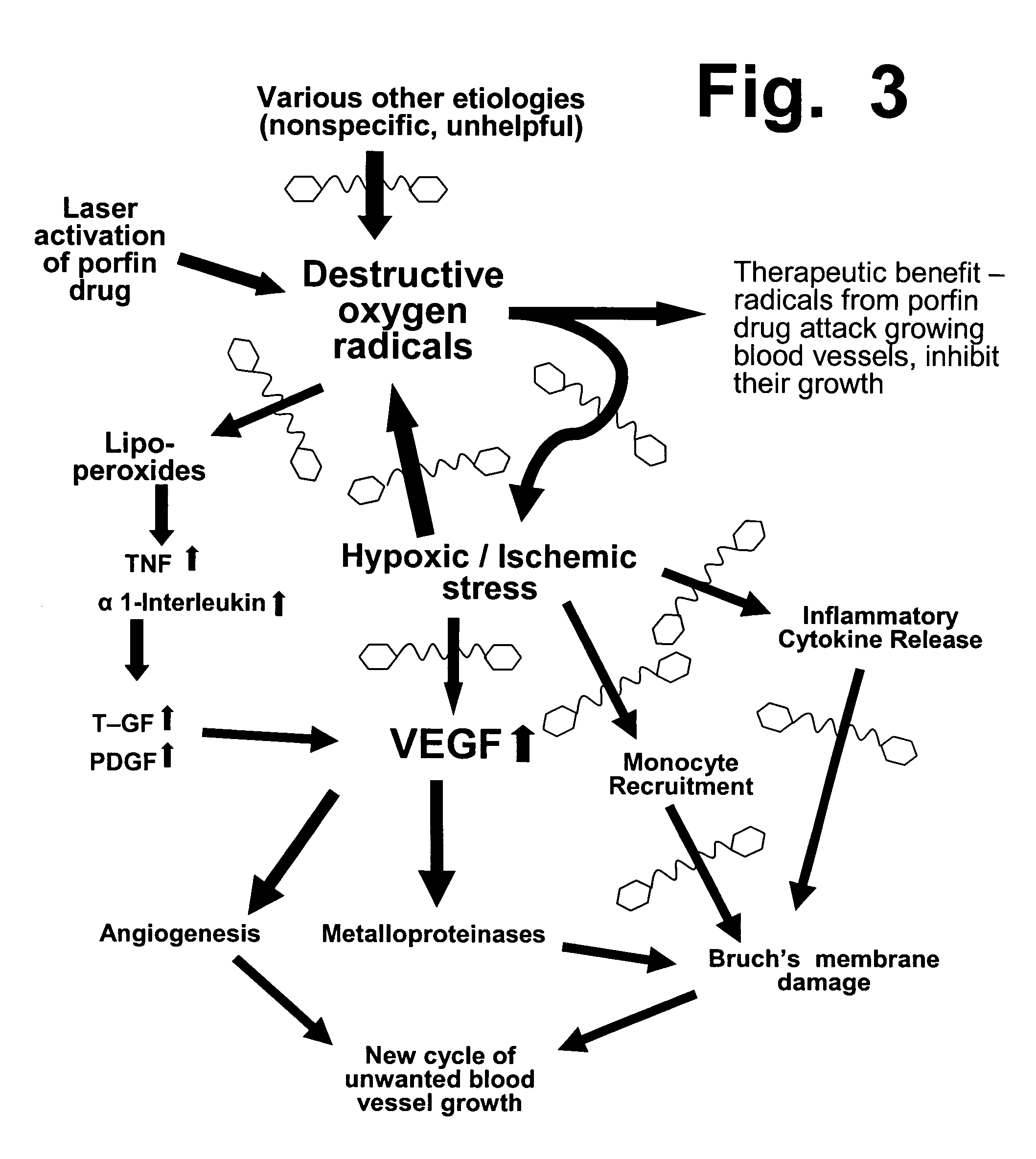Preloading with macular pigment to improve photodynamic treatment of retinal vascular disorders
a technology of retinal vascular disorders and macular pigment, applied in the field of medicine, can solve the problems of increasing the risk of diabetic retinopathy, affecting the effect of diabetic retinopathy, and affecting the treatment so as to improve the benefits and efficacy of photodynamic therapy, improve the effect of macular pigment density of patients
- Summary
- Abstract
- Description
- Claims
- Application Information
AI Technical Summary
Benefits of technology
Problems solved by technology
Method used
Image
Examples
example 1
Treatment of Male in His Late 70's
[0159] An adult male, age 78 at the time, was suffering from wet macular degeneration. He was told that he did not have much time left with the residual vision he still had, and he was advised by his ophthalmologist to get his financial and legal affairs in order, while he still had as much eyesight left as possible.
[0160] This patient subsequently met and spoke with the Applicant herein, since the patient had learned that the Applicant was involved in founding a company that sells zeaxanthin, for treating macular degeneration. The Applicant informed him that he had some contacts at the Wilmer Eye Institute, a world-famous eye care and research institute affiliated with the Johns Hopkins Medical School, in Baltimore, Md., and that he (the Applicant) had made a number of donations to support research there. The Applicant offered to make some calls in the patient's behalf, to see if he could be seen and treated soon, and the patient accepted that of...
example 2
Results of Zeavision Customer Survey
[0171] In the summer of 2004, the assignee company (ZeaVision LLC) began searching for customers who were: (i) taking zeaxanthin supplements they had purchased from ZeaVision, and (ii) had received one or more PDT treatments, for wet macular degeneration. They did this by sending postcards to customers, asking them to contact ZeaVision if they had received PDT treatment. Those customers who responded were briefly interviewed by phone by the customer support staff, who asked questions and filled in a worksheet that had been prepared to help guide the interviews.
[0172] Most of these patients with age-related eye problems are in their 70's or 80's. They could not always provide exact dates when talking from memory during a phone call, and no efforts were made to check their actual medical records, or to consult with the ophthalmologists who performed their PDT treatments. In addition, nearly all of these patients were taking one or more additional ...
PUM
| Property | Measurement | Unit |
|---|---|---|
| time | aaaaa | aaaaa |
| time | aaaaa | aaaaa |
| density | aaaaa | aaaaa |
Abstract
Description
Claims
Application Information
 Login to View More
Login to View More - R&D
- Intellectual Property
- Life Sciences
- Materials
- Tech Scout
- Unparalleled Data Quality
- Higher Quality Content
- 60% Fewer Hallucinations
Browse by: Latest US Patents, China's latest patents, Technical Efficacy Thesaurus, Application Domain, Technology Topic, Popular Technical Reports.
© 2025 PatSnap. All rights reserved.Legal|Privacy policy|Modern Slavery Act Transparency Statement|Sitemap|About US| Contact US: help@patsnap.com



